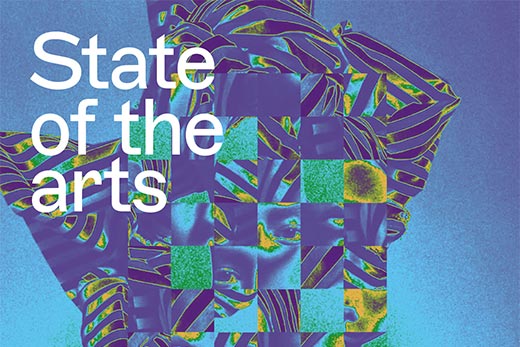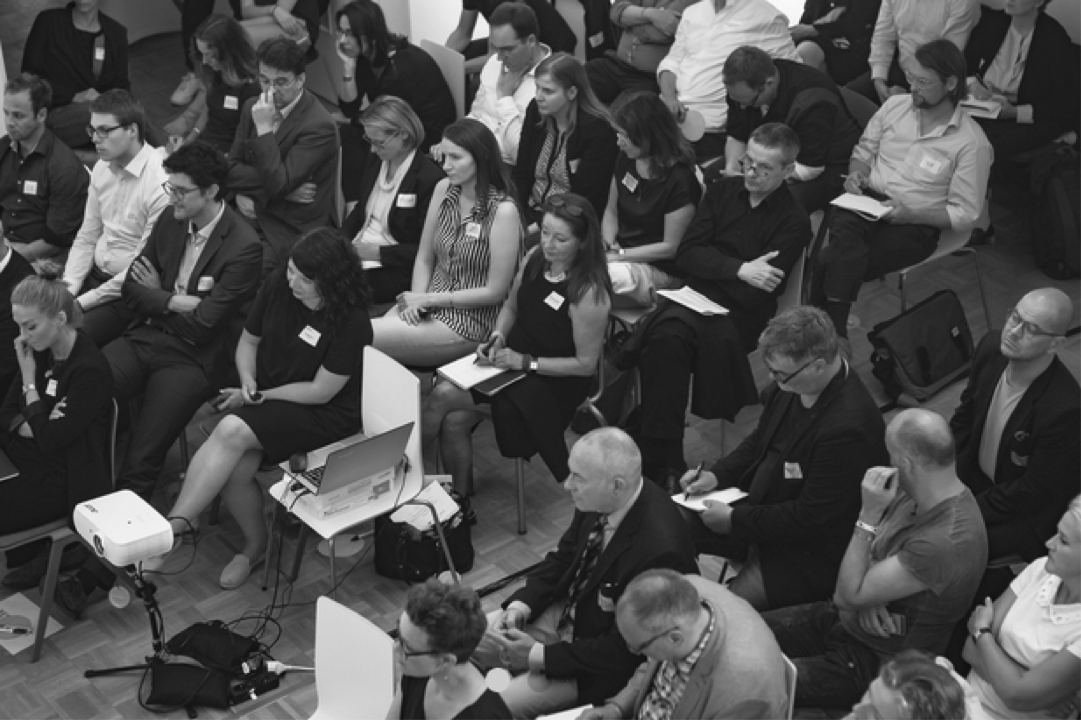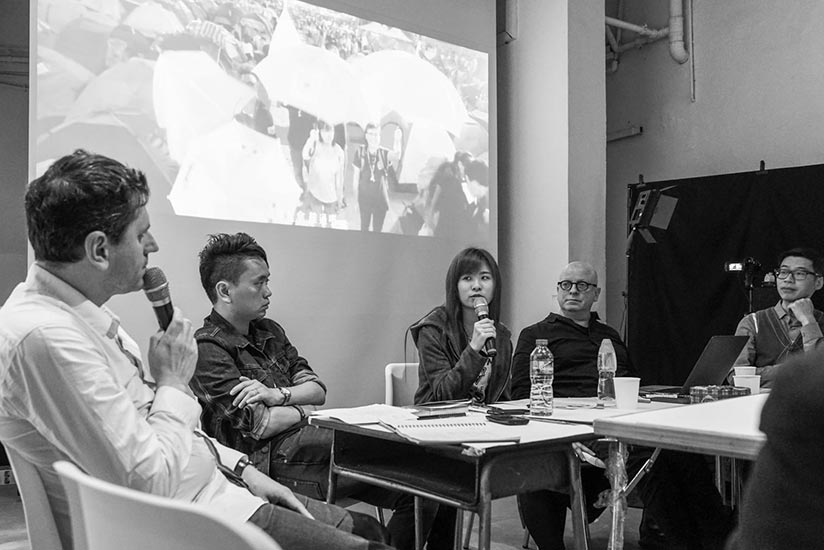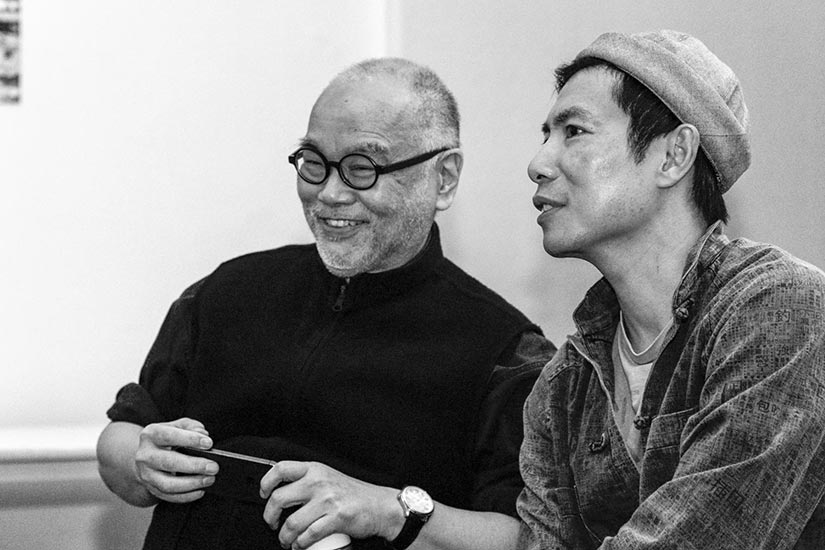“It is about overcoming the economist”
At the 2019 International Conference on “The Future Relevance of the Creative Economies: Familiar and New Narratives,” there was unanimous agreement that while the significance of the cultural and creative industries, and their funding eligibility, are beyond question, they cannot be measured exclusively based on economic principles. Discussing the case of Barcelona, Francesca Bria’s lively lecture illustrated that although the difference between creative professionals, business and public administration and their logics may prove to be an obstacle, this can be overcome.
No-one in the audience contradicted art historian and cultural studies scholar Wolfgang Ullrich when, in the late afternoon of a long and intense conference day, he observed that the ongoing transformation of the cultural and creative industries (CCIs) resembles “a revolution.” “Social media are only a few years old, digitalisation is 10 years old, and the Internet is 20 years old — just how momentous the possibilities of this revolution are is demonstrated not only by the transforming creativity narrative, according to which every human being has become an artist or creator.”
Around 280 CCI actors from Germany and abroad, as well as decision-makers from the public and private sectors, gathered for the 2019 International Conference. Those participants who told themselves that a revolution involves a fundamental and sustainable structural change, of one or more systems, and takes time to complete, will have felt somewhat relieved. After all, on this unusually cold 30 October in the Kalkscheune Berlin, participants had heeded the call of the Federal Centre of Excellence for the Cultural and Creative Industries to counter familiar narratives on the future relevance of the creative economies with new ones.
A new phase in cultural history
Francesca Bria, the Italian keynote speaker, illustrated a particularly impressive new narrative, which Ullrich later identified as “the marking of a new phase in cultural history.” As a former Chief Technology and Innovation Officer of Barcelona, Ms Bria initiated the city’s transition to a “smart city” driven neither by technology nor by digital platforms. The questions directing this process were “City for whom?” and “Smart for whom?” First and foremost, the “city” should be “smart” for its citizens and — “based on the bottom-up principle” — steered by them.
Bria has helped “smarten” Europe’s second most densely populated megacity. This not only involved its “digitalisation” but also leveraging this digitality at both the structural and the institutional levels: The respective projects concerned “housing, the health system, mobility, renewable energies, green spaces and climate change.” What distinguishes this shift is that “these projects are based on the digital sovereignty and collective intelligence of its citizens and their democratic participation and control.” Because, and herein lies surmounting a well-known narrative in favour of a new one: “AI grows and will rule our future. We all need to implement public control and democracy over time, if we do not want to be ridden by AI.”
The fact that Bria is now implementing the model of a smart city as a senior adviser to the United Nations on a global scale attests above all to her model’s feasibility and sustainability. It also illustrates the necessary preconditions: the willingness to implement structural and institutional changes (especially on the part of the public sector), as well as the complexity and costs of such transformation. Morever, it shows that actors from all fields — citizens as well as public and private authorities, science as well as technology and art — can succeed at transformation. The more interest groups participate, the more sustainable transformation becomes.
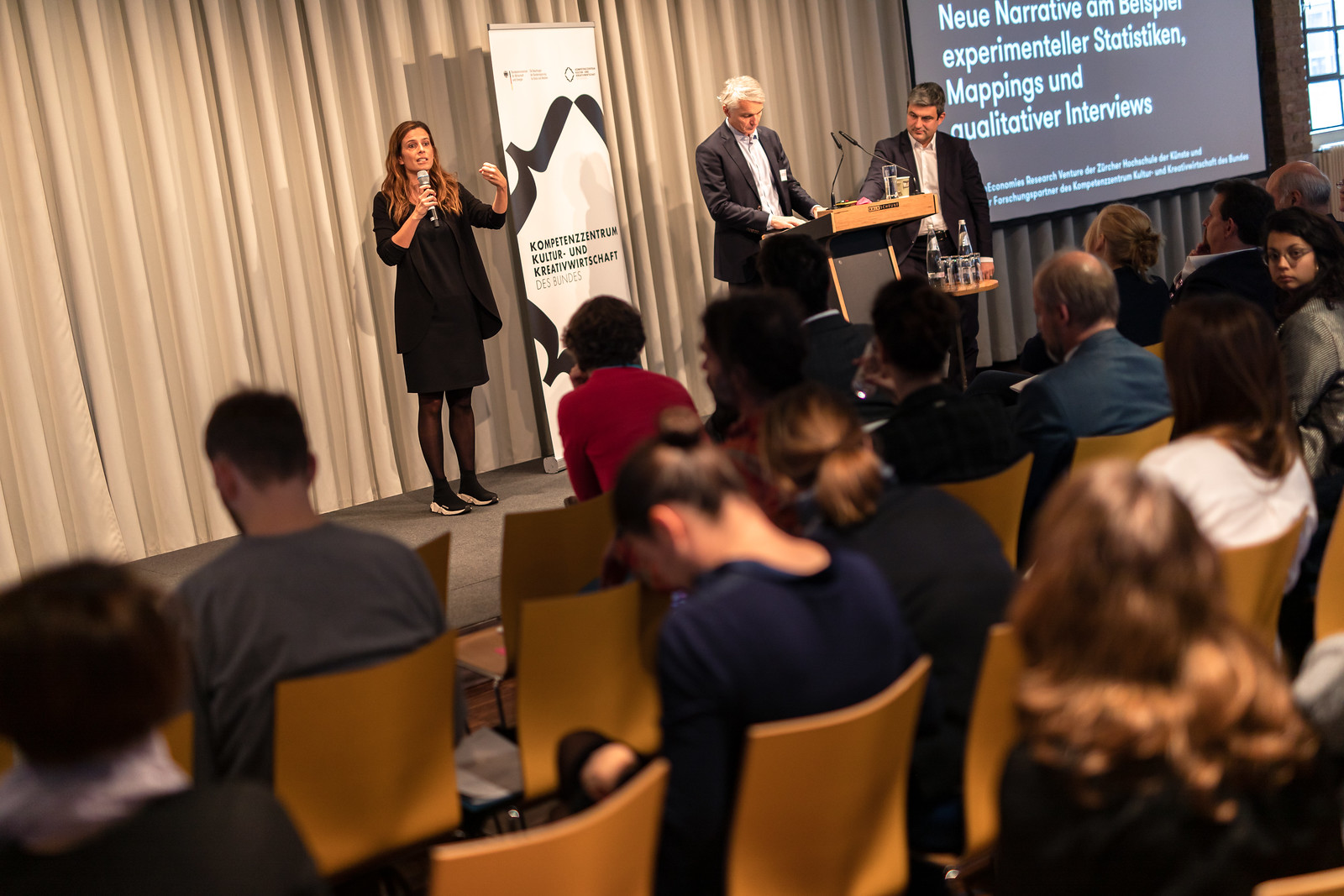
Taking users into account
The user perspective — citizens and the digital sphere in the case of Barcelona — also corresponds to a proposal made by Simon Grand and Christoph Weckerle, whose CreativeEconomies Research Venture at Zurich University of the Arts (ZHdK) is exploring the creative economies — among others as a research partner of Germany’s Federal Centre of Excellence for the Cultural and Creative Industries. Grand argues that both directions need to be considered: “It is as much about what unites the CCIs as about emphasising each actor’s and each position’s
singularity. This can be achieved, for example, by focusing on the user perspective: How do they see the value added by the CCIs?” He illustrates this by pointing out that the CCIs’ “mainstream” effect can be as important as the “uniqueness” of a specific product or project.
Weckerle adds: “We forge new narratives by differentiating: Are we talking about the CCI as an economic sector or as part of a much broader economy, one that also considers the interfaces to science, society or politics? — Depending on the interface, merely spillovers occur or instead new, alternative approaches. Do we expect the CCIs to produce growth or innovative strength? — In the CCIs, one outcome as a rule excludes the other. Is funding meant to ensure that what exists keeps growing or that something new and unknown emerges? — The CCIs can achieve both, but the latter is risky. Is the issue how the CCIs describe themselves or how they can be described to outsiders? — Answers will vary depending on the perspective.” Thus, one quality of the creative economies is that they are constantly evolving as a phenomenon and thus elude a “View from Nowhere.”
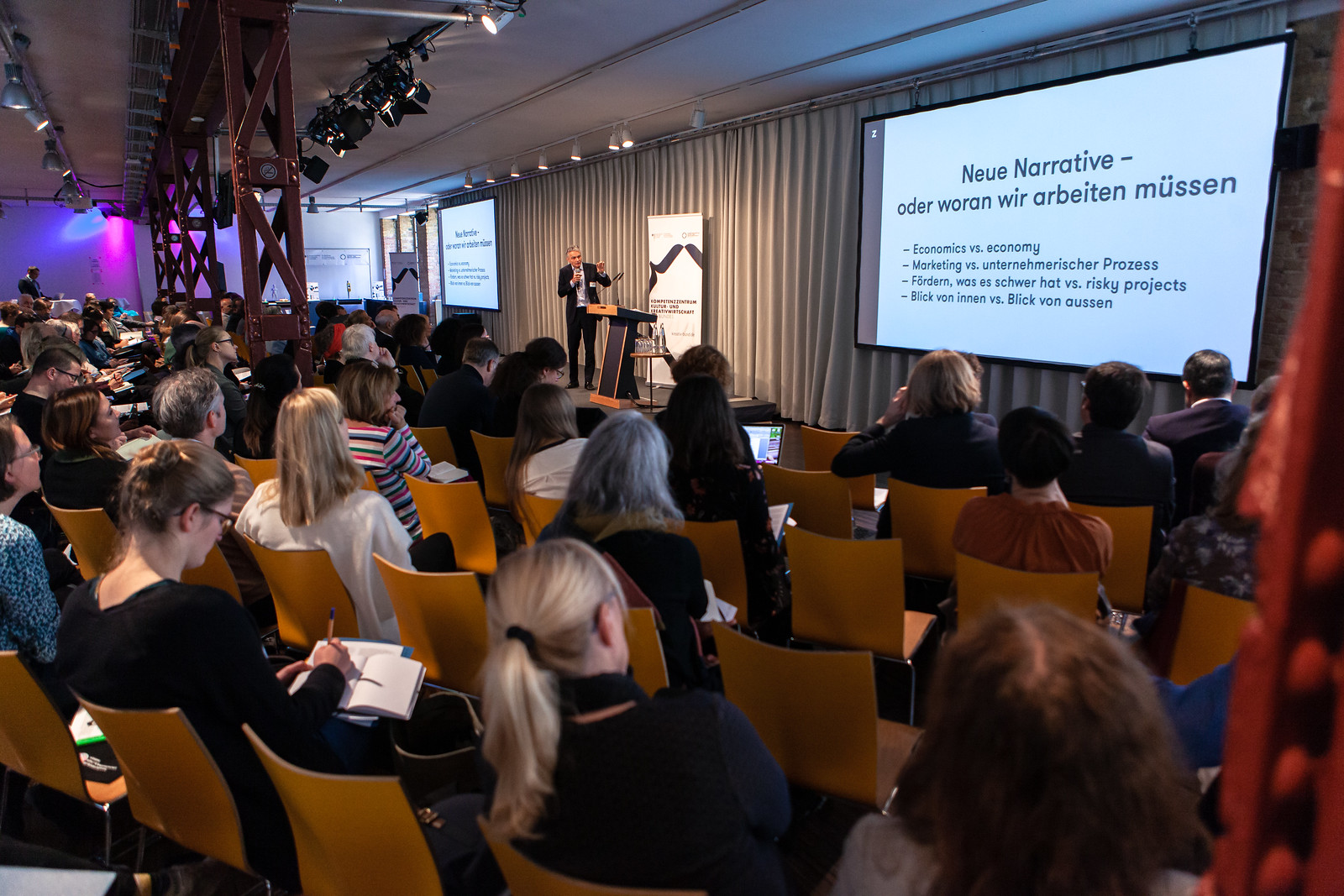
Sobering reality
How helpful can new narratives be in the everyday professional lives of the 2019 conference participants? The five two-hour workshops, to which the participants retired in the afternoon — to discuss innovation potential, globalisation or innovation strategies, possible interfaces with SMEs or using data as a new form of measurement — revealed that new narratives could prove very helpful. Strikingly, the needs resulting from everyday work in the context of the cultural and creative industries are very similar.
One participant summed up a recurring view: “The common classification of the cultural and creative industries as an industry with x submarkets ignores the diversity of activities taking place there. My daily work involves promoting creative projects at the municipal level. And yet, either the project ideas cannot be clearly assigned to existing submarkets, or funding applications take over a year or even longer to process because the amount requested exceeds 10,000 euros.”
New funding structures have priority
Dr. Christian Rauch, founder and operator of the STATE festival, gallery and agency, reported as follows from the workshop he ran on the innovation potential of the CCIs: “We discussed how the state can benefit from its commitment to and investments in the cultural and creative industries, not only culturally and socially, but also financially. Participants agreed: Additional financial value is usually only measurable in the CCIs after the state has rewarded failure, promoted openness to results and supervised innovation.” A representative of Germany’s Federal Employment Agency interjected: “My impression is that ministries are prepared to provide funding, but they don’t know what funding instruments might look like. Looking abroad might help, for example to France, where every artist commits to provide a contingent of teaching in return for funding.”
In the workshop on CCIs as a future industry, ran by the philosopher Jens Badura, Sylvia Hustedt provided a powerful image: “From dishwasher to millionaire, the race to the moon: such narratives encompass dimensions from Superman to the poor poet. How can we arrive at a description of our industry? How can what we can do also be conceptually framed to include the specificity, otherness and sustainability of this industry?” Overall, participants highlighted the problematic confinement to the concept of innovation. Jens Badura: “As far as promoting the cultural and creative industries is concerned, the idea of a transdisciplinary and qualitatively oriented funding structure has been voiced. A broad spectrum of qualitative criteria and competency building is needed to assess the concepts, entrepreneurial strategies and outcome-relevance of cultural and creative economy activities.
Ultimately, the question raised at the outset by Secretary of State Claudia Dörr-Voss reverberated among participants: “How, if not in figures, can the economic significance of the cultural and creative industries be measured?” At the end of the day, the following conclusion may have suggested itself: It is a matter of accepting and no longer debating the fact that, in a ministerial view, the CCIs will never be measured like “the real economy.” And if one trusts Ullrich’s claim of an already initiated upheaval in cultural history, then this irritation can and will one day be overcome. On the way to this goal — Weckerle humorously raises the idea of a “post-ministry” (analogous to concepts such as post-growth), Backes humorously raises the idea of “overcoming the economist” — statistical representation is required, the dynamics of models and mapping methods using Open and Web Data as well as the most diverse narratives. For it is only in unison that these types of survey can substantially contribute to depicting the volatile and risk-laden contexts of the creative economies.
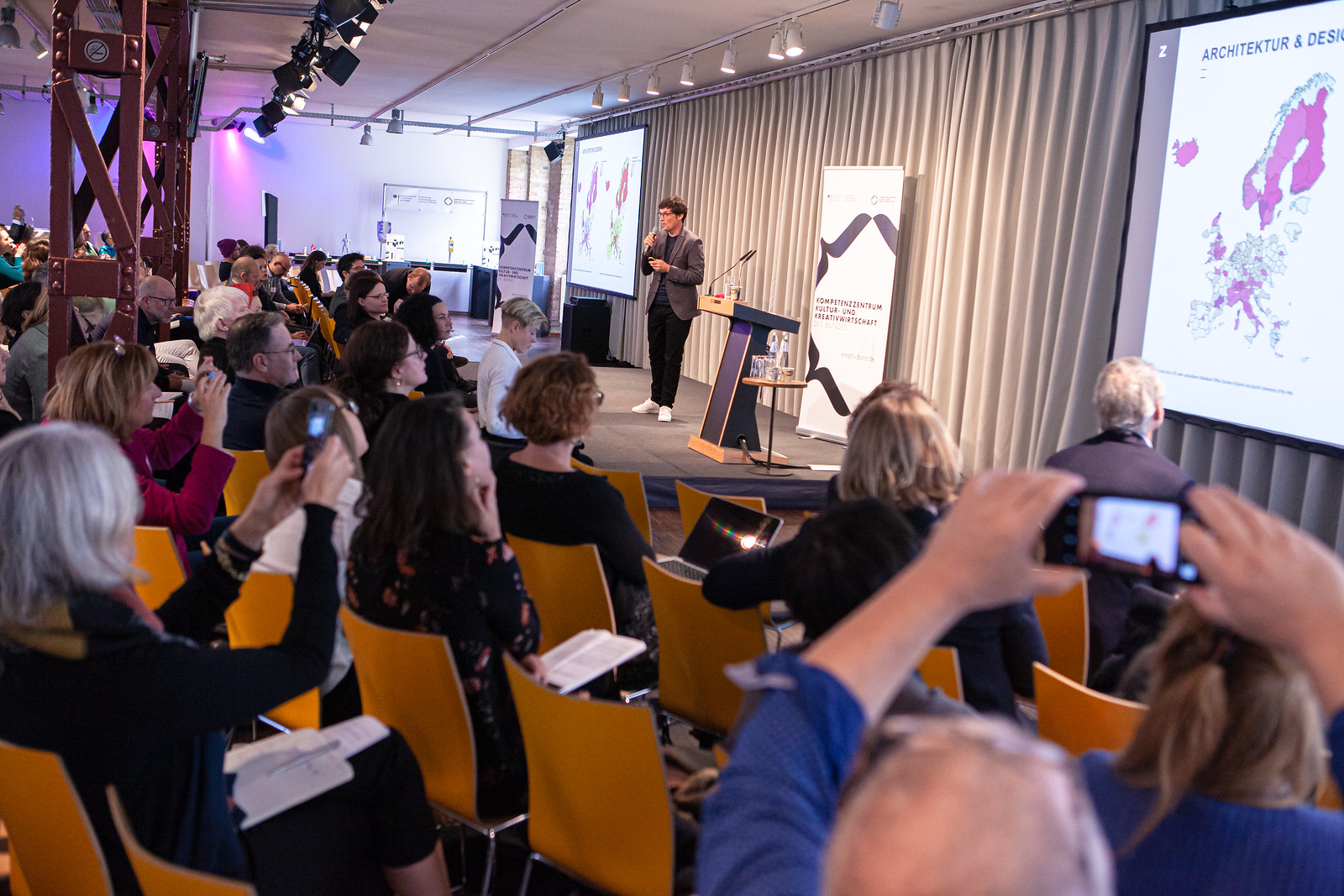
New funding structures have priority
Dr. Christian Rauch, founder and operator of the STATE festival, gallery and agency, reported as follows from the workshop he ran on the innovation potential of the CCIs: “We discussed how the state can benefit from its commitment to and investments in the cultural and creative industries, not only culturally and socially, but also financially. Participants agreed: Additional financial value is usually only measurable in the CCIs after the state has rewarded failure, promoted openness to results and supervised innovation.” A representative of Germany’s Federal Employment Agency interjected: “My impression is that ministries are prepared to provide funding, but they don’t know what funding instruments might look like. Looking abroad might help, for example to France, where every artist commits to provide a contingent of teaching in return for funding.”
In the workshop on CCIs as a future industry, ran by the philosopher Jens Badura, Sylvia Hustedt provided a powerful image: “From dishwasher to millionaire, the race to the moon: such narratives encompass dimensions from Superman to the poor poet. How can we arrive at a description of our industry? How can what we can do also be conceptually framed to include the specificity, otherness and sustainability of this industry?” Overall, participants highlighted the problematic confinement to the concept of innovation. Jens Badura: “As far as promoting the cultural and creative industries is concerned, the idea of a transdisciplinary and qualitatively oriented funding structure has been voiced. A broad spectrum of qualitative criteria and competency building is needed to assess the concepts, entrepreneurial strategies and outcome-relevance of cultural and creative economy activities.
Ultimately, the question raised at the outset by Secretary of State Claudia Dörr-Voss reverberated among participants: “How, if not in figures, can the economic significance of the cultural and creative industries be measured?” At the end of the day, the following conclusion may have suggested itself: It is a matter of accepting and no longer debating the fact that, in a ministerial view, the CCIs will never be measured like “the real economy.” And if one trusts Ullrich’s claim of an already initiated upheaval in cultural history, then this irritation can and will one day be overcome. On the way to this goal — Weckerle humorously raises the idea of a “post-ministry” (analogous to concepts such as post-growth), Backes humorously raises the idea of “overcoming the economist” — statistical representation is required, the dynamics of models and mapping methods using Open and Web Data as well as the most diverse narratives. For it is only in unison that these types of survey can substantially contribute to depicting the volatile and risk-laden contexts of the creative economies.
